Where and how do nuclear reactors do
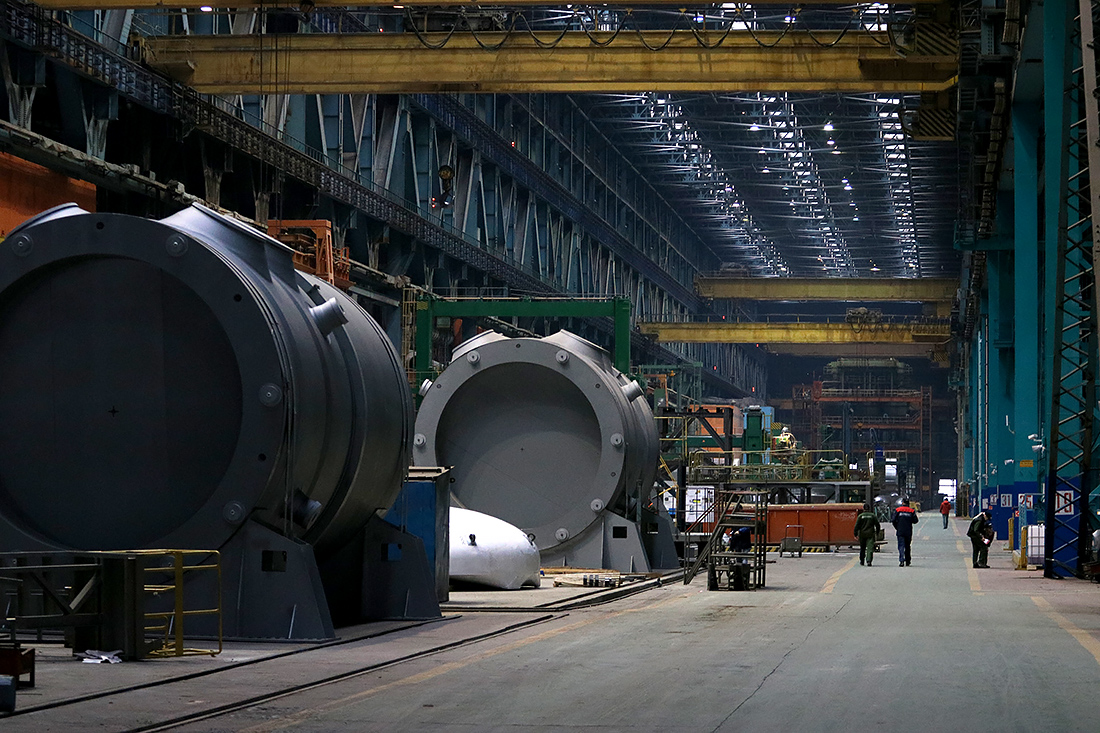
The photo report from Atommash is the pride of Rosatom - a giant production, where they make the hulls of one of the most demanded nuclear reactors for nuclear power plants: VVER-1000 and VVER-1200.
Recently, I was invited to share my experience in popularizing science at the Neforum Science event . The meeting was organized with the participation of Rosatom, and there they proposed to include the atomic topic in their reviews. They decided to start with photo stories. In one day, we managed to visit the plant of nuclear reactors and a nuclear power plant. Today a report from the production.
Atommash is located in the Rostov region not far from the city of Volgodonsk, and is part of Atomenergomash, the engineering division of Rosatom.
At the entrance hall, the original monument from the VVER-1000 reactor casing attracts attention. For its creation, one of the three real buildings of the VVER-1000 reactor, which remained unclaimed after a sharp reduction in the construction of new nuclear power units in the USSR after Chernobyl, was used. Today it is no longer possible to use them at the stations under construction, therefore it was useful as a monument.
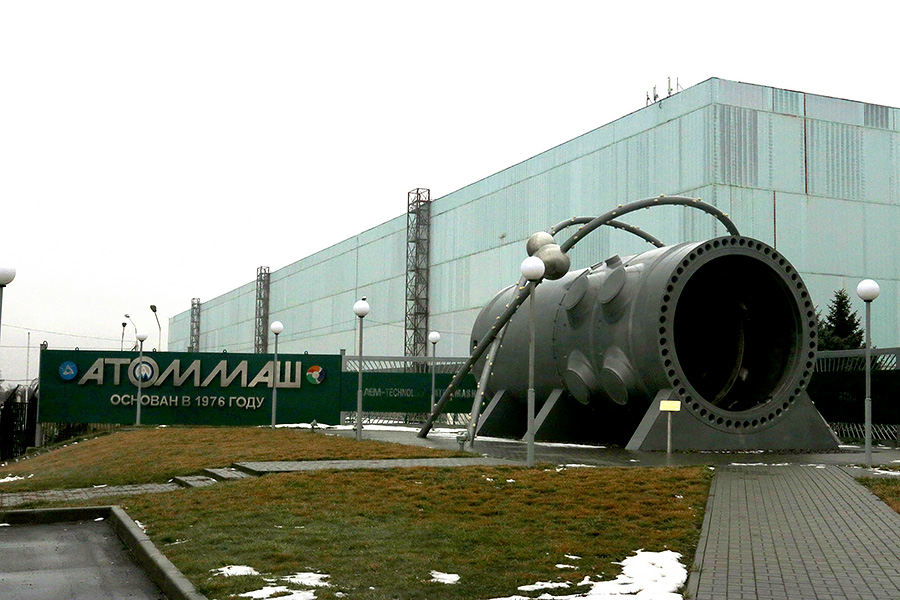
The tour took place in company with Andrei Urbanturizm - a video blogger who is interested in the history of technology, architecture, the metro, nuclear energy, etc.
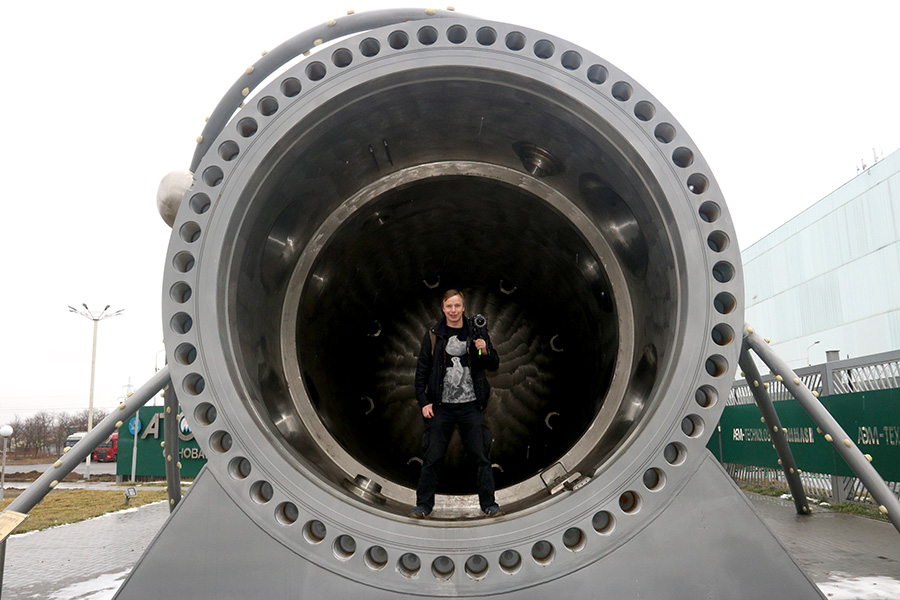
At the entrance of all employees and guests waiting for the turnstiles and metal detector frames, and even before the "tube" - breathalyzers, in which everyone must blow and wait for the green signal to pass to the production.
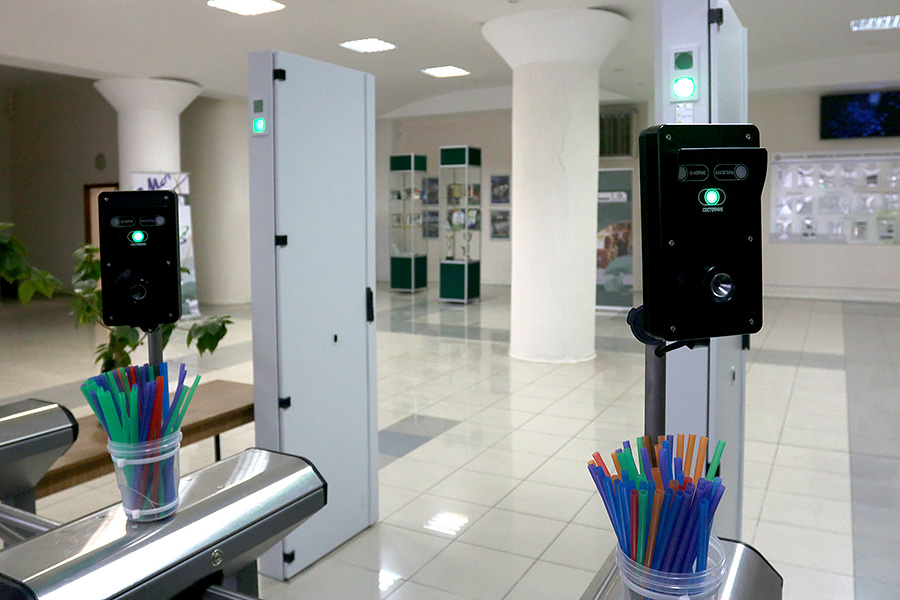
Since the components of nuclear fuel do not work here, the inspection procedure at the entrance and exit is much simpler than at nuclear power plants, but all photo-video equipment was only passed through the list and with the verification of serial numbers.
At the entrance, a container for collecting chemically dangerous household items: fluorescent lamps and batteries attracted attention. Rosatom strongly emphasizes the environmental cleanliness of its activities, and this is expressed not only in public relations, but also in quite useful small businesses.
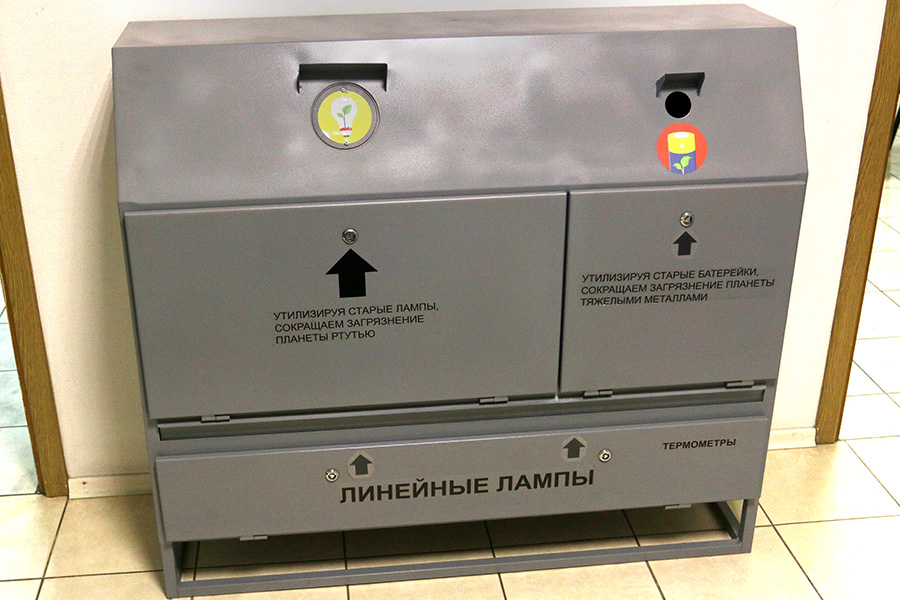
Every worker and visitor should be in possession of personal protective equipment: a helmet and goggles. For many employees and guest bloggers, the helmet is being replaced by a “casket” - a baseball cap with a tight plastic frame inside. The mass of manufactured products at the plant amounts to tens of tons, and this casket protects against an accidental head strike on any beam as effectively as a regular helmet, and the helmet does not help from a multi-ton reactor.
The first point of the tour is the museum. Here the most interesting exhibit is the layout of the enterprise. A museum employee is not without pride showing the scale of the enterprise.
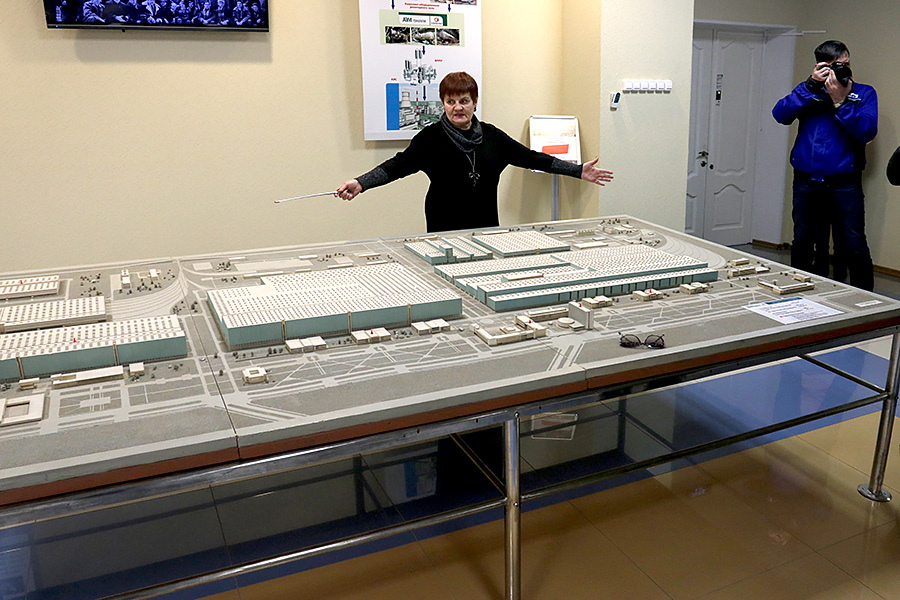
Although some buildings from the project have not been built (they are marked with red marks on the layout), but if we compare them with a picture from space, we managed to realize the main part of the production space.
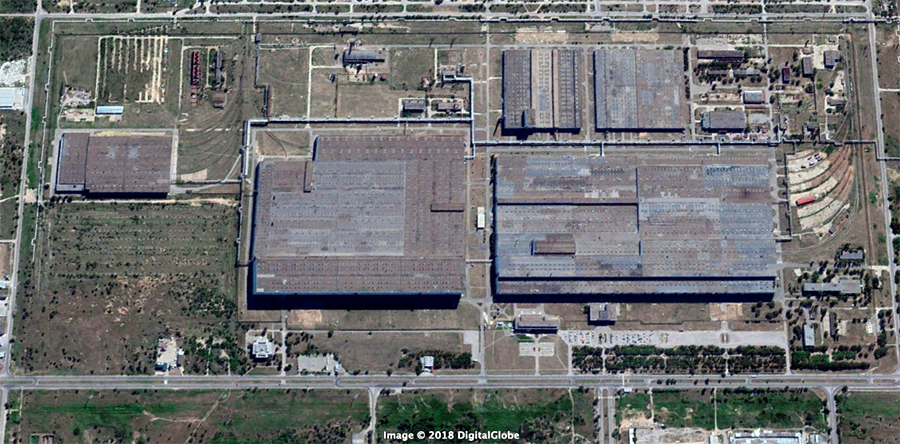
Atommash also started building in 1974 under the name VZTM. It became one of the most important construction projects of the Soviet Union of that time, which was to cope with the lack of electricity in the growing economy of a socialist state. Then they thought and planned on the scale of decades, and already at the beginning of the 70s they knew that in the 80s they would need the energy they hoped to get from an atom.
“Then the atomic industry was created by the titans,” says the guide, and I already remember the space achievements of the USSR. Indeed, there were a lot of titans then. It is even hard to believe that these were ordinary people, quite talented and motivated, the need for which was felt by the state and made it possible to work and realize themselves.
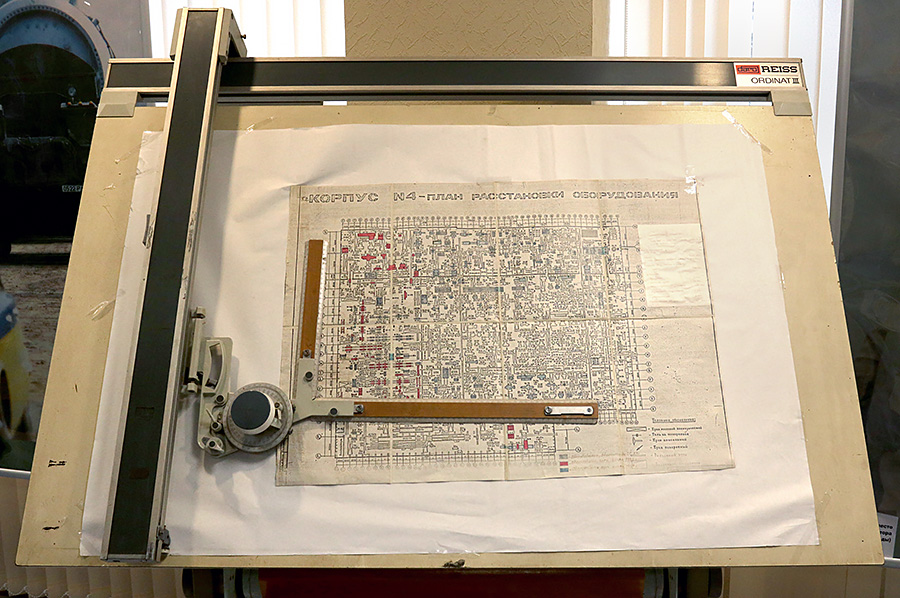
The production workshops of Atommash were created according to the opposite principle. Not first the box, and then the equipment, but first the equipment, in the temporary pavilions, which were arranged according to the planned technological operations, and only then - the main walls of the workshops.
The result of such construction can be considered the uneven height of the roof of the main workshop, which corresponds to the equipment inside.
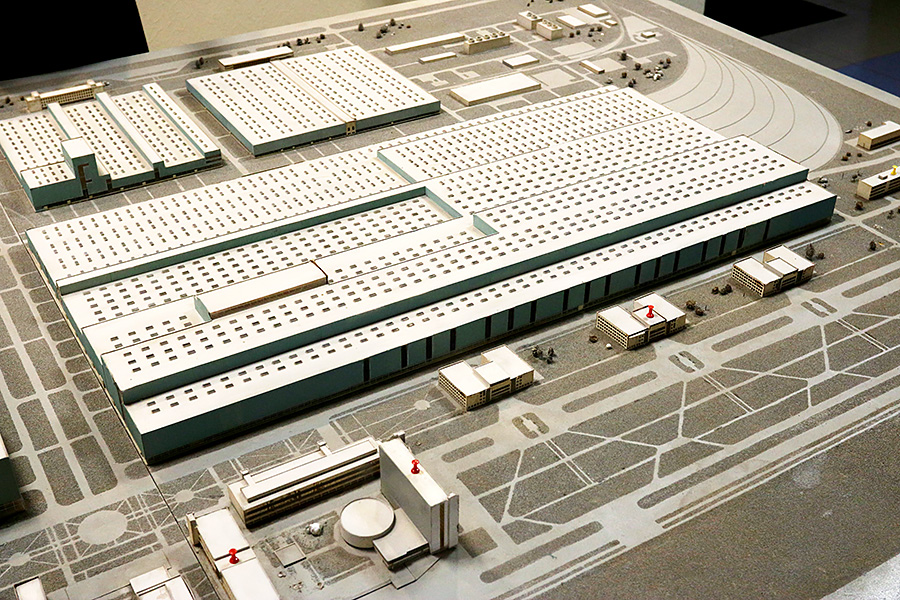
It is characteristic that almost all heavy machines at the plant are foreign. Press - Japanese IHI, German carousel machines - Dörries, there were also Swedish (ESAB) and Italian (BREDA) names.
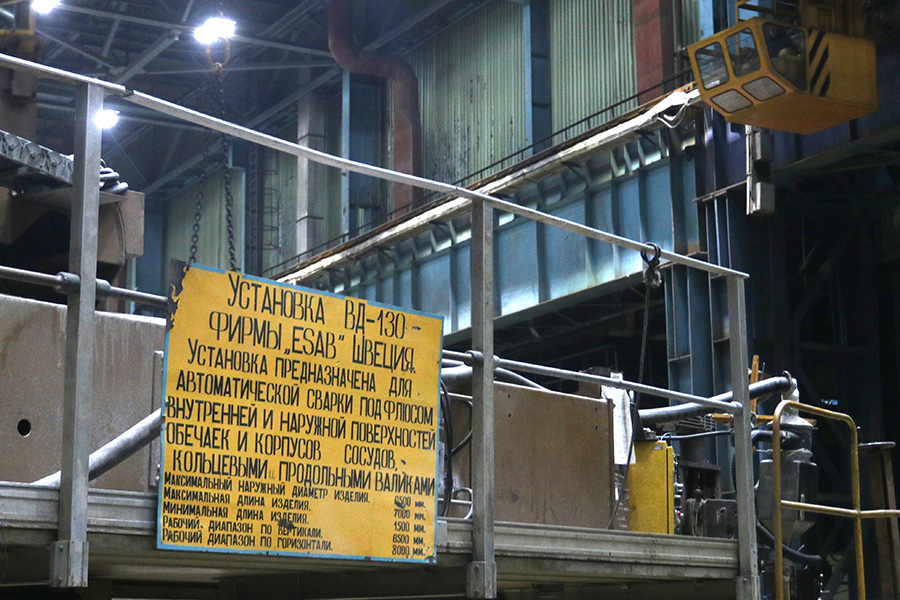
The Japanese press is a separate pride of the plant. In the museum you can see the current model of the press. They say it was presented as a compensation for non-compliance with the delivery and installation of this machine.
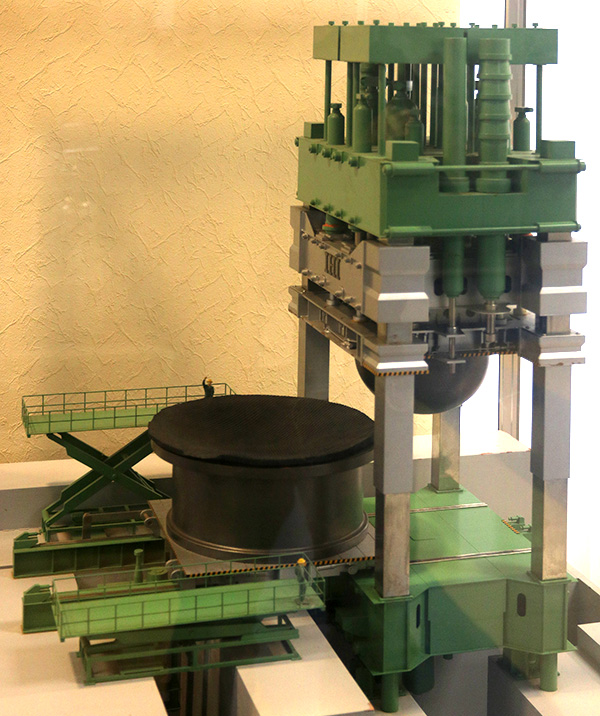
Other models show better what products are manufactured now and how they are used in nuclear power engineering.
Nuclear reactor VVER-1000 The
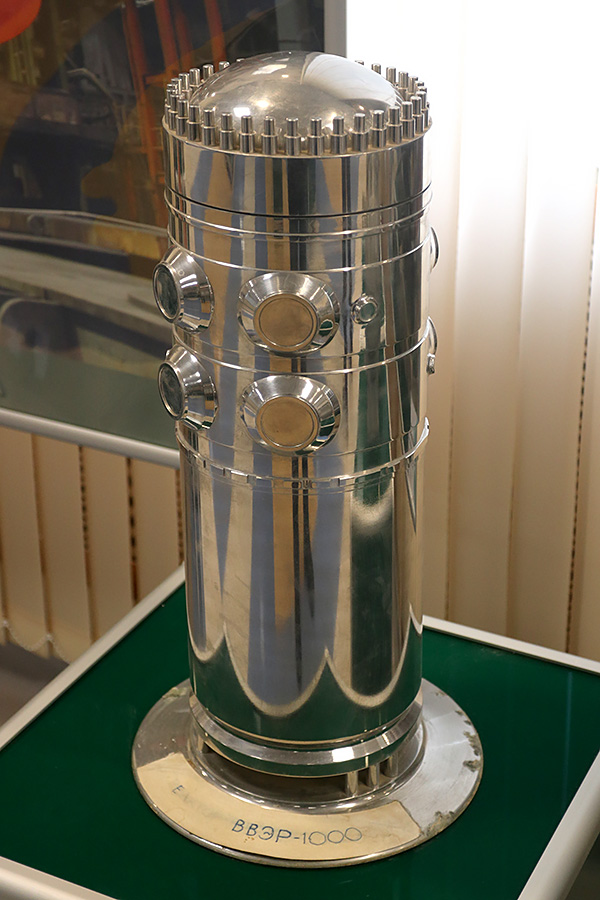
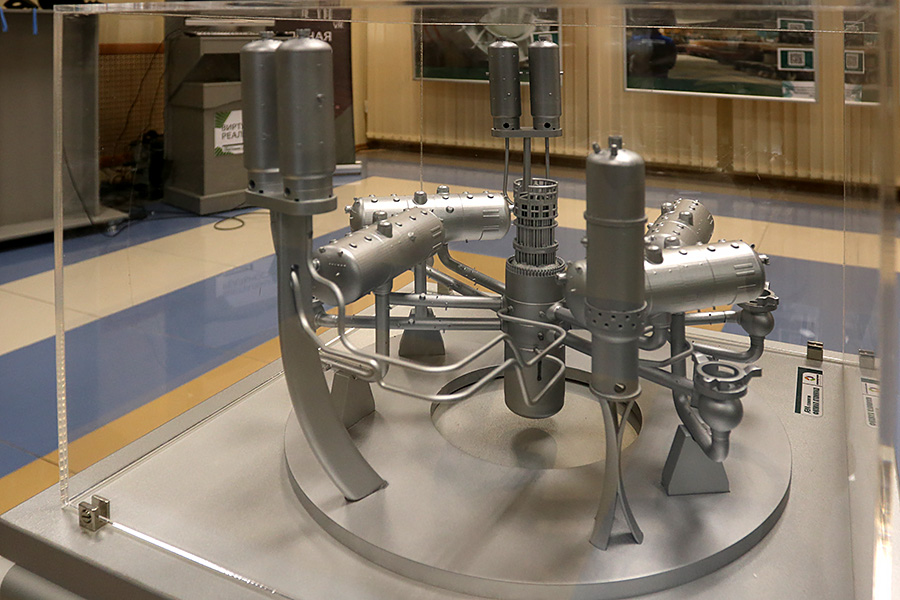
steam generator of the reactor installation
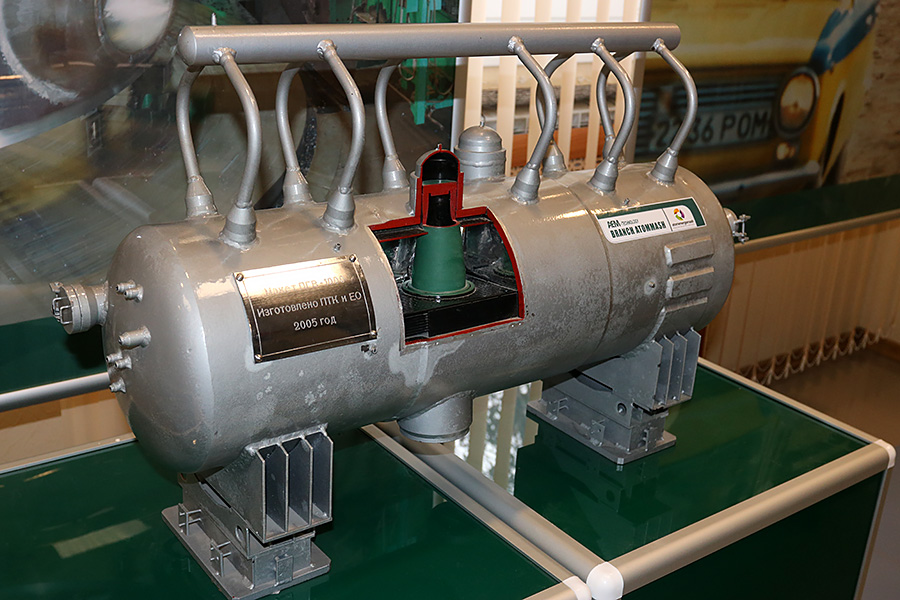
Since the 80s at the factory produced nuclear reactors VVER-1000. The Chernobyl accident crossed out the atomic future of the Soviet power industry. In 1986, orders for products for Minsredmash virtually ceased, and the plant had to repurpose. All aggravated the 90s, which were a heavy blow for the whole country.
But it was possible to work a little and space. It turns out "Atommash" produced a rocket lift for the project "Sea Launch" .
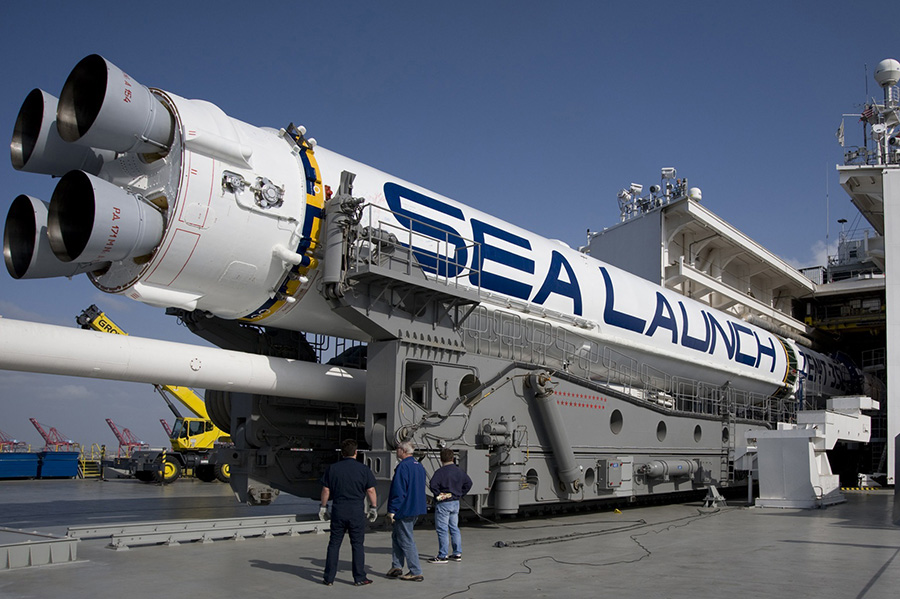
In general, Atommash’s specialization, apart from equipment for NPPs, is the production of large and heavy metal products. The plant also works for science - it made elements of the T-15 tokamak for the Kurchatov Institute, and for non-nuclear power engineering gas turbines, and for the oil industry equipment for oil refineries.
The return to the atomic family occurred relatively recently - in 2009, when Atommash became part of Rosatom. Now they are producing VVER-1200 reactors, whose production we saw.
The first products have already been delivered to the Belarusian NPP.
We move to the main shop. The December weather of the south of Russia does not indulge. It is overcast, drizzling rain, and somewhere behind the mist and water suspension in the air one can see the cooling tower of the Volgodonsk CHP-2, which feeds Atommash with energy.
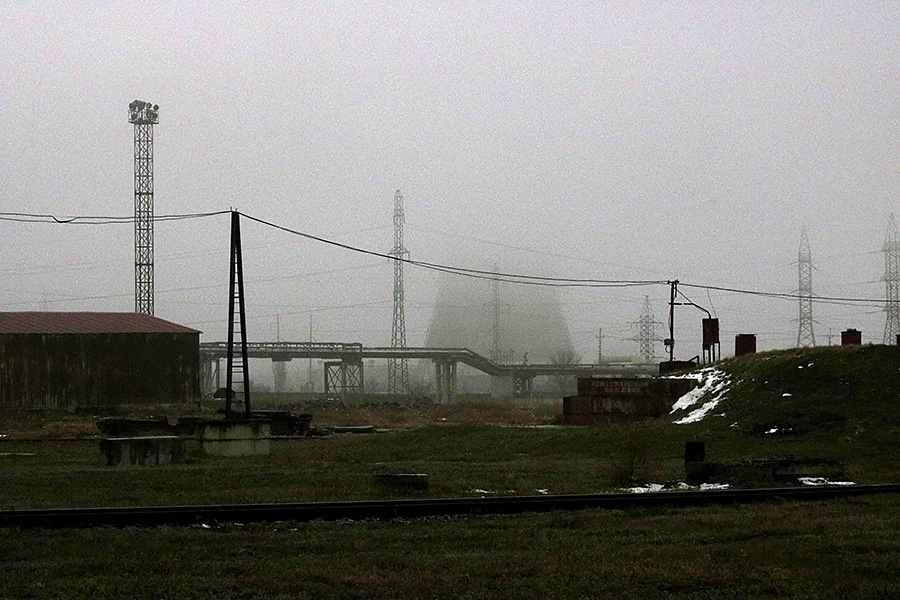
As soon as the eyes adapted to the twilight of the factory floor, a gigantic press attracted all the attention.
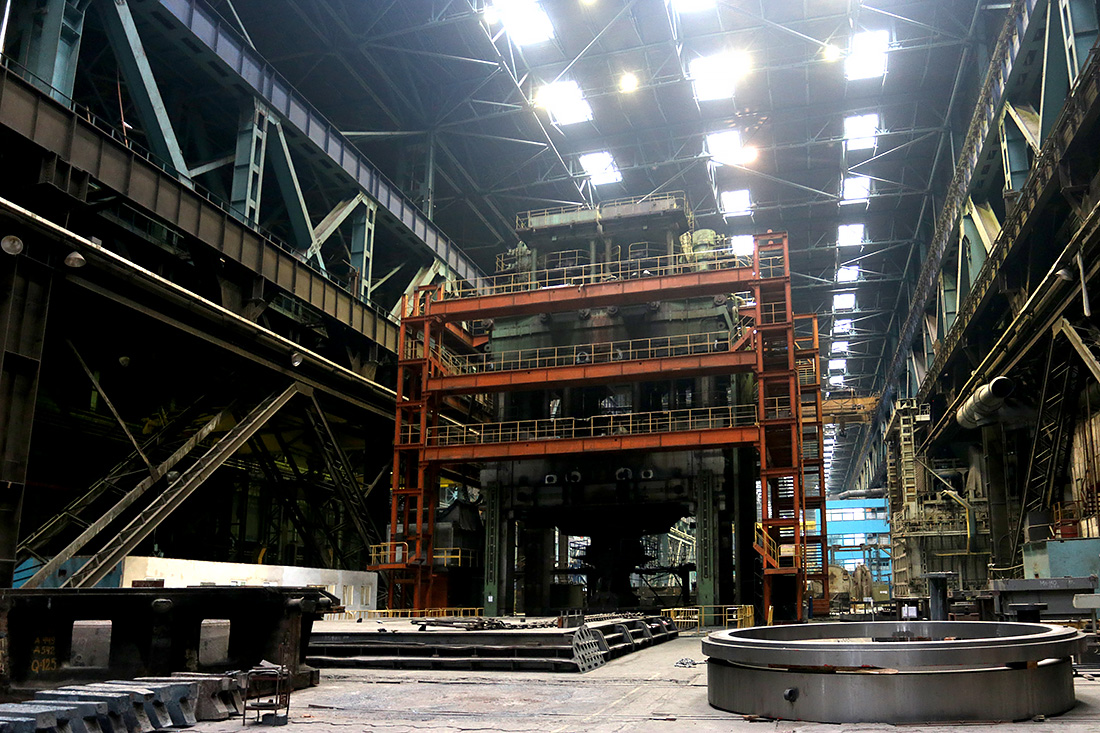
The height of this span of the factory shop is 40 meters. The height of the press - a little less - with a five-story house or higher.
Created effort - 15 thousand tons.
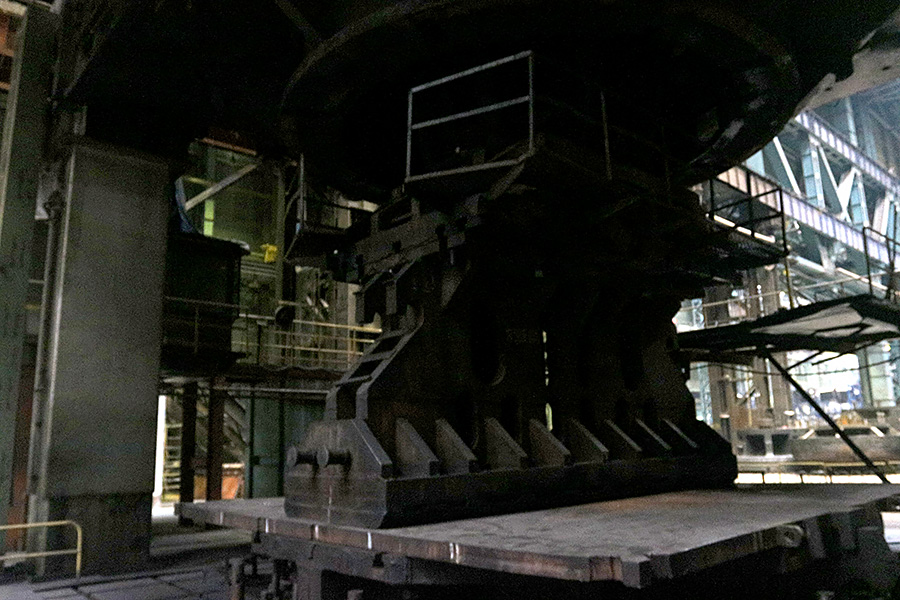
The press is used for hot processing of metal products. Nearby - furnaces for heating billets up to 1200 degrees, but unfortunately, the work of the press with hot metal itself could not be seen.
In the next span, the press equipment is folded, warped by the high temperature of the blanks.
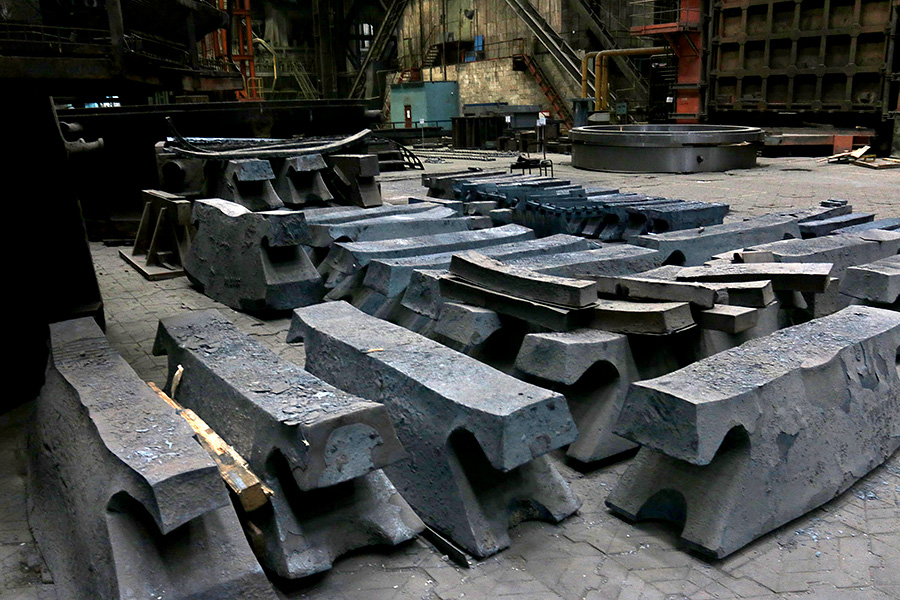
Reactors and steam generators have a stacked case of several segments, which are welded by argon, argon arc and machine welding under the flux.
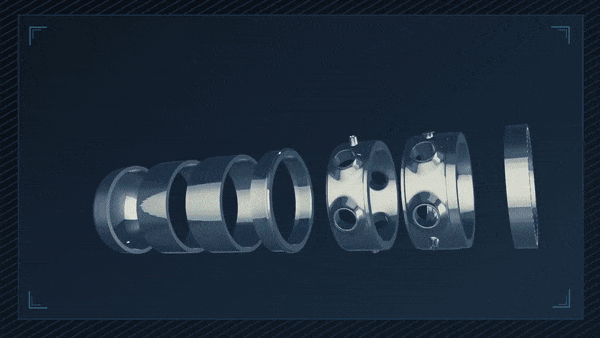
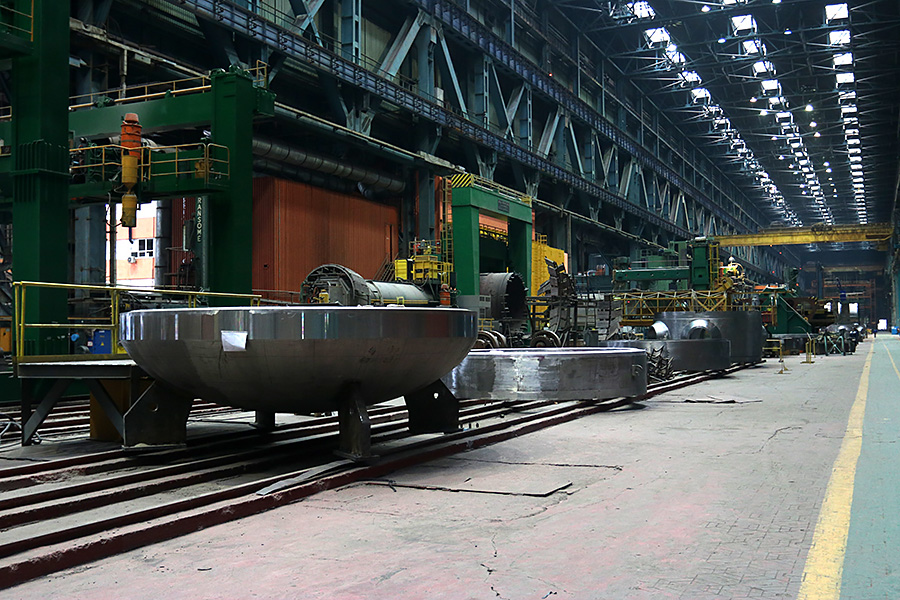
After heating and pressing, the products diverge depending on the purpose, and they return to this span already in finished form for annealing and passing tests.
Heating, pressing, welding, boring, lead to the fact that the workpiece accumulates internal stresses, and they need to be removed by annealing - heating to 650 degrees and gradual cooling of the workpiece together with the furnace. Annealing furnaces are also gigantic: an opening of 8x8 meters.

Since we did not find the furnace in operation, we managed not only to look inside, but also to climb and look out through the eyes of a freshly burned reactor or steam generator.

After annealing, the product waits for another test with water and "x-ray tubes". X-ray camera for scanning through and searching for internal defects from afar attracts attention with a warning orange color.
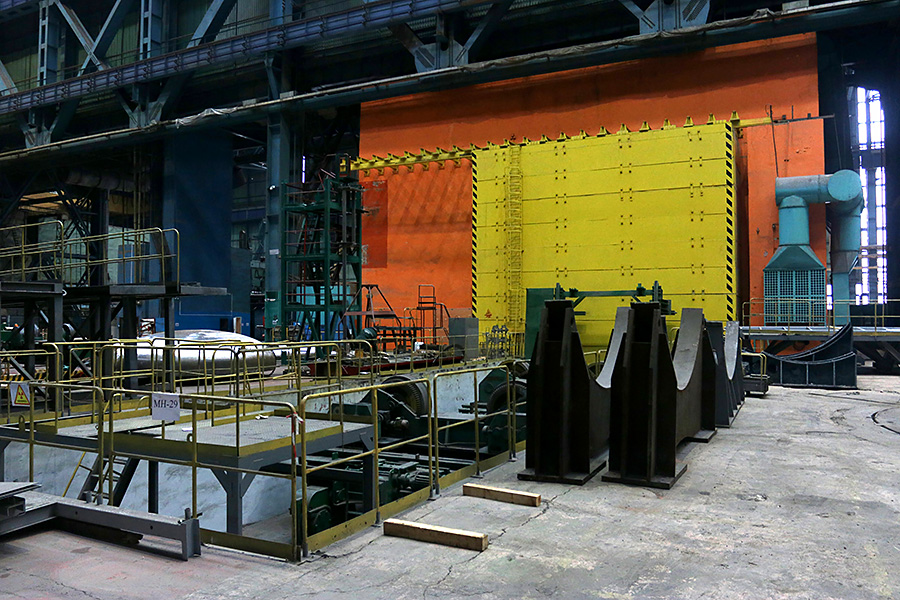
It is just as big as a stove, but another four-meter-high reinforced concrete door is added so that the X-ray does not affect the personnel.
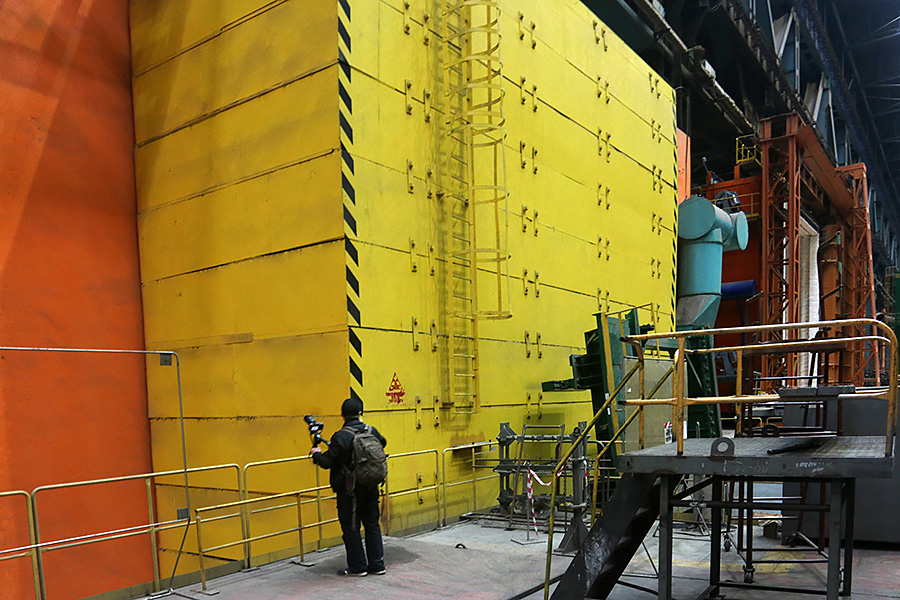
To drive the monumental door on the rail used chain transmission.

Even if X-rays show full readiness of the reactor, it just will not let go. There is still water testing ahead.
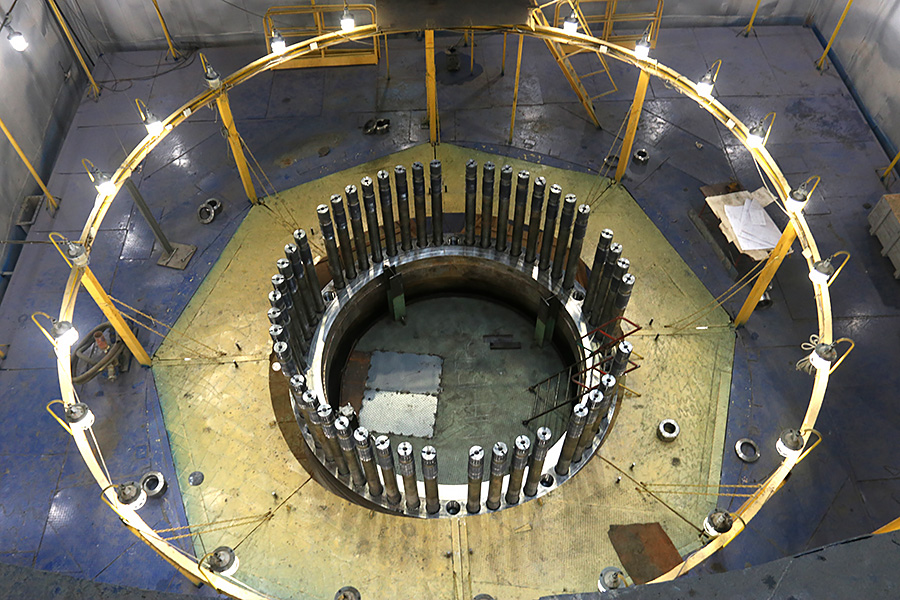
To confirm readiness, the reactor is pumped with water under a pressure of 250 atmospheres, although its working pressure is 160 atmospheres.
And only after all the procedures, Atommash vouches for its products and sends them to customers.
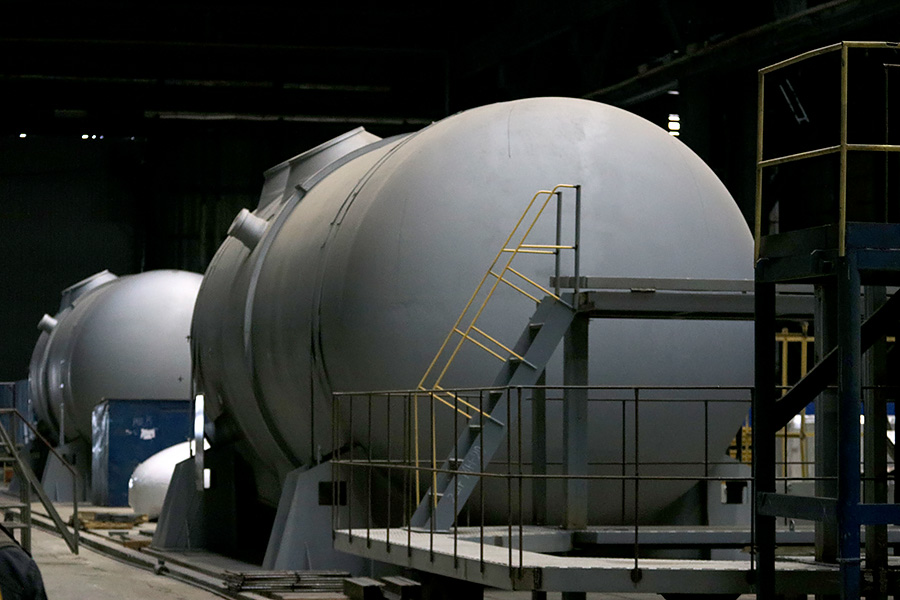
In general, everything is gigantic there. I can not even believe that such heavy equipment is needed to extract energy from such small atoms. Even the crane beams move in two levels and have different load capacity.
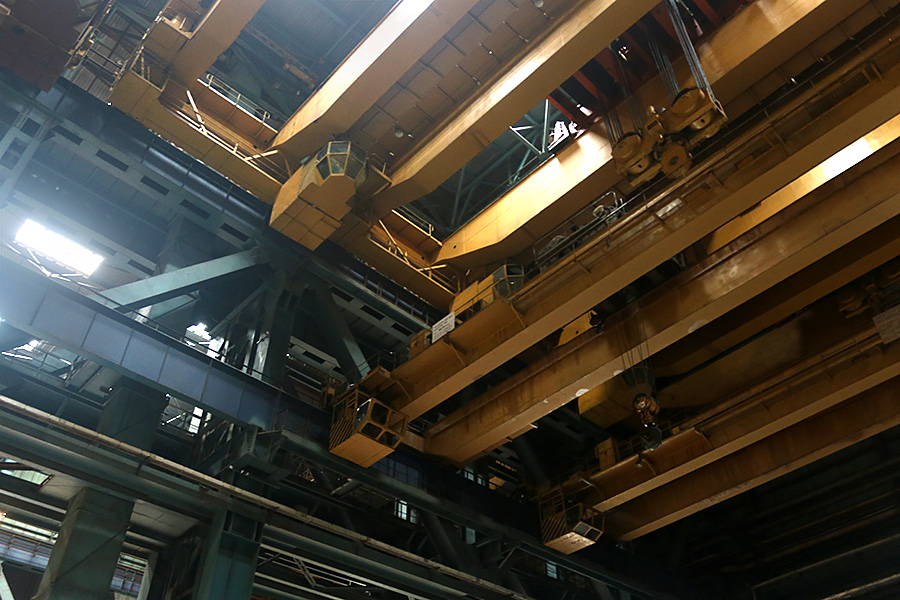
But to whom dusty work at the computer in the Rosatom openspace?
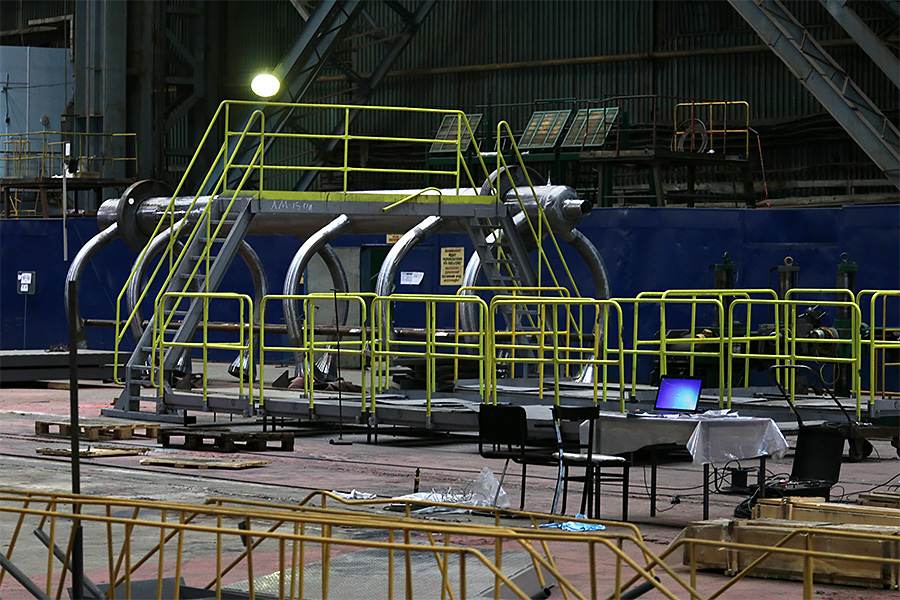
Working with steam generators requires more jewelry work, because outside and inside many elements. They work with them in the next passage of the shop.

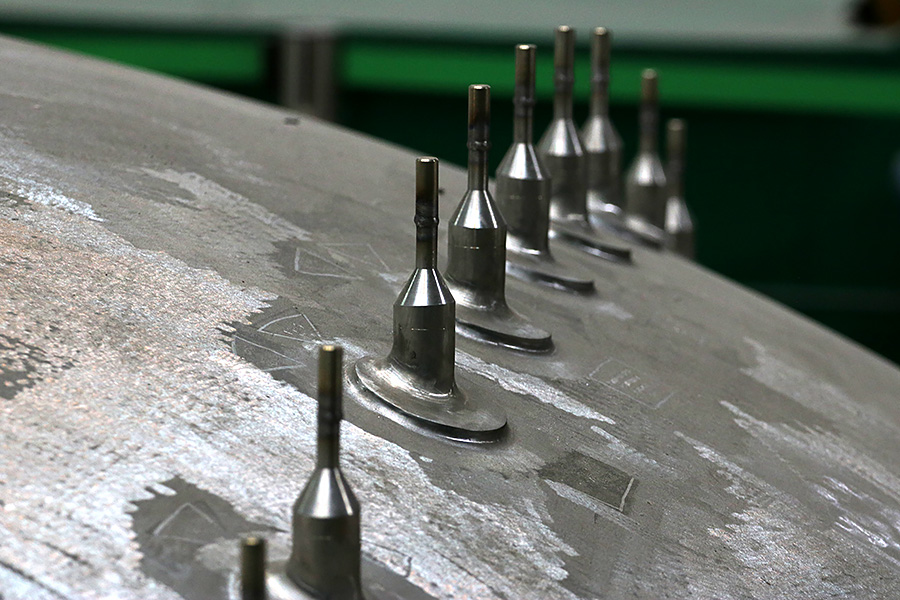
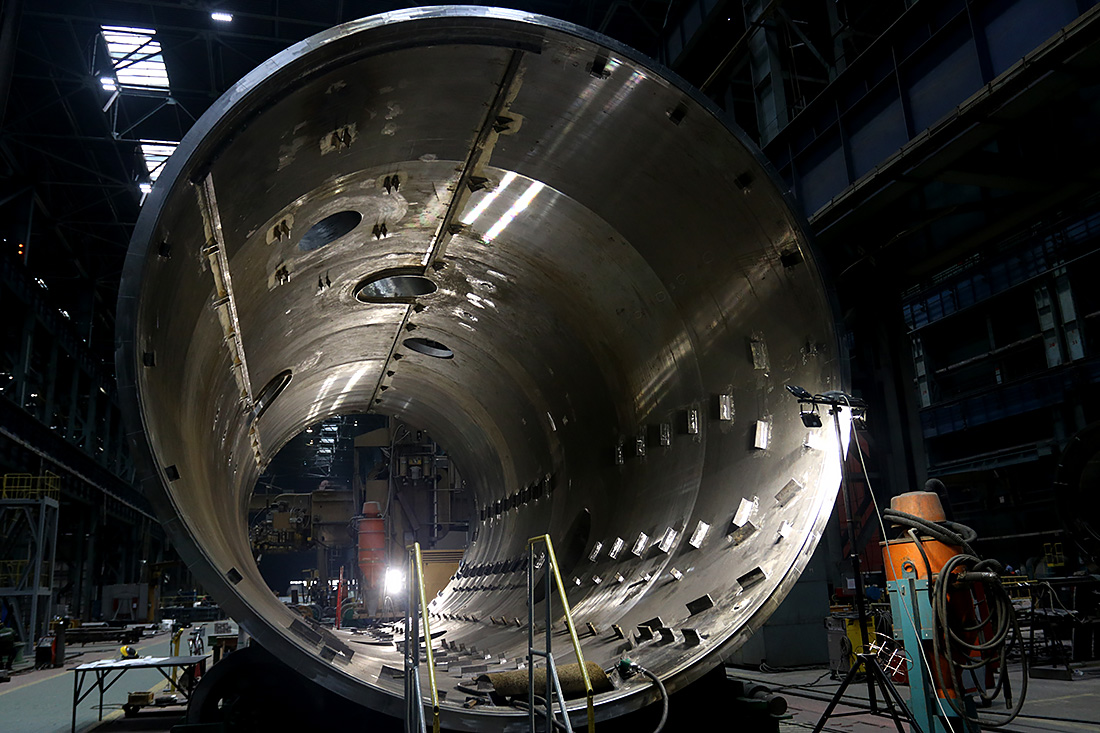
There is less heavy equipment, more machines and more workers.
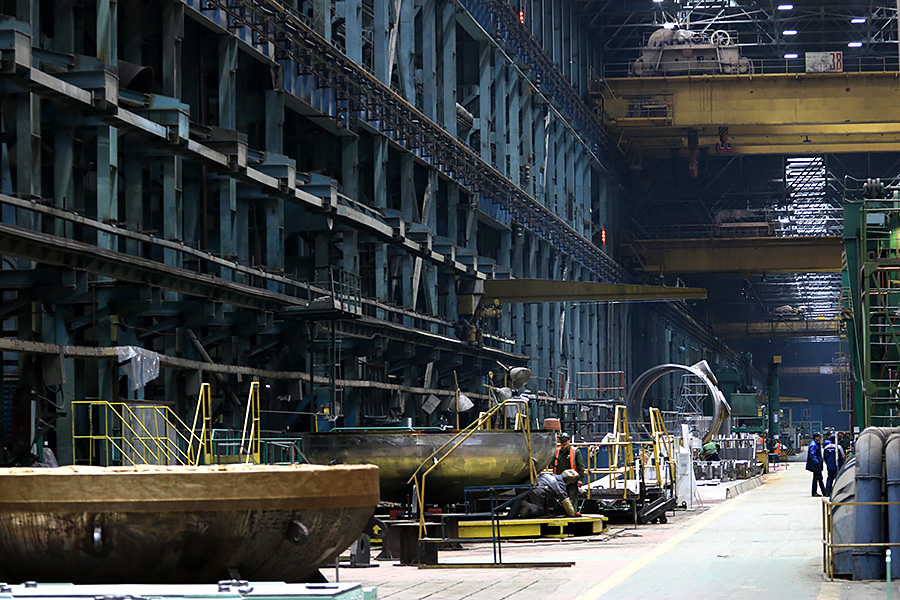
More welding and more grinding.
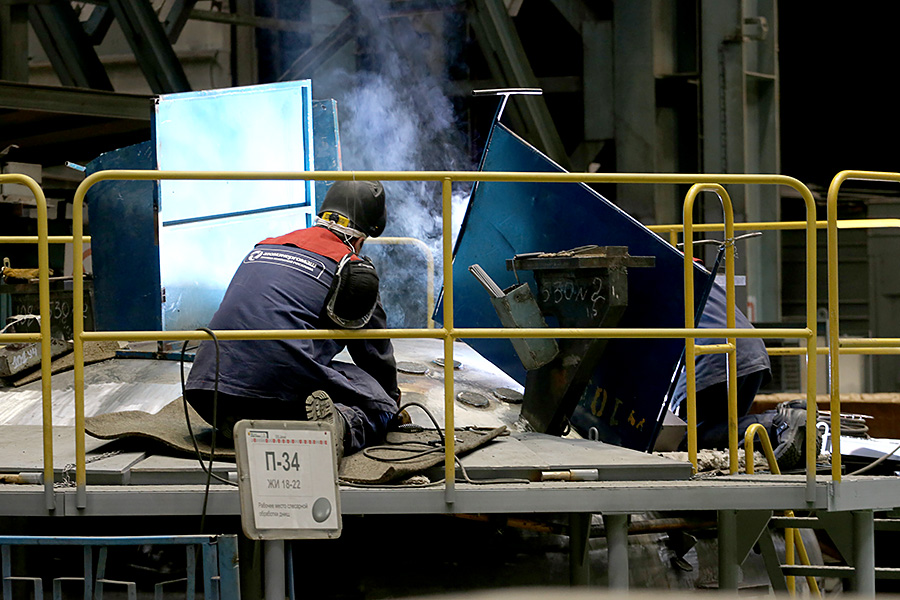
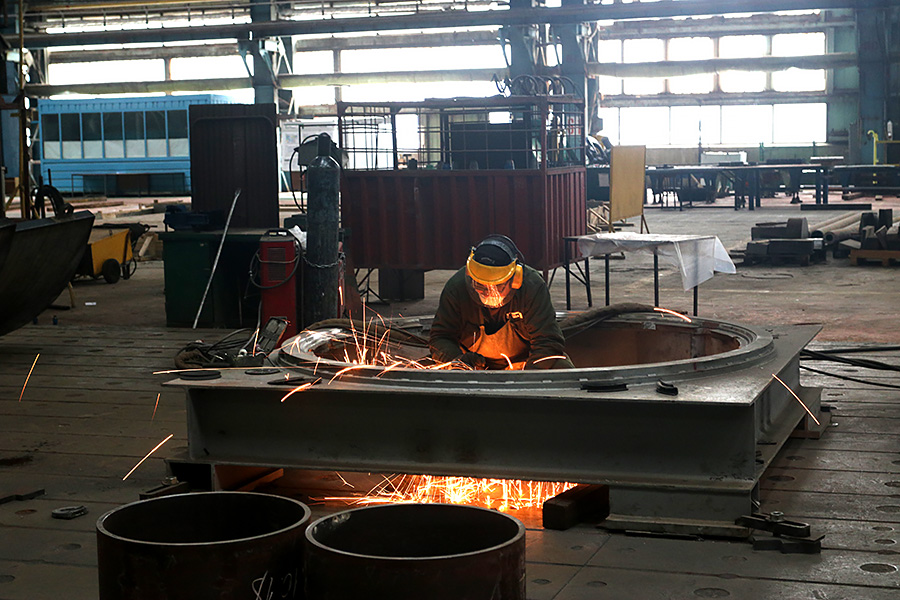
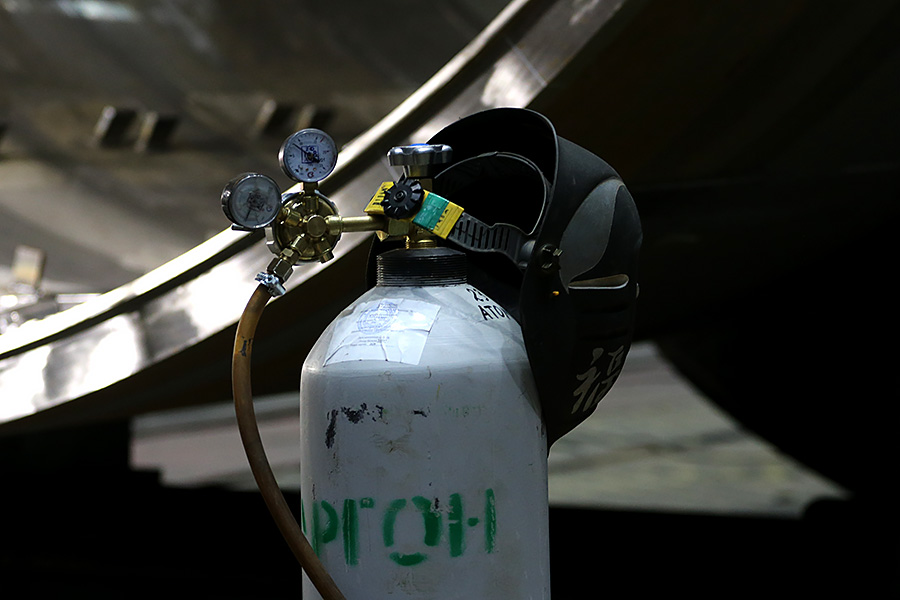
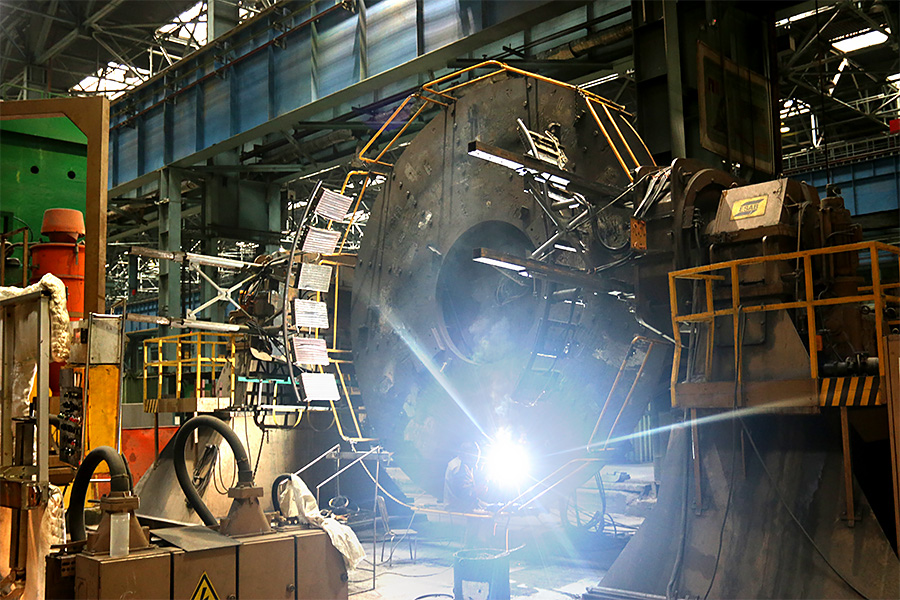
It happened to observe one operation - kantovka, i. rotate parts by 90 degrees. Two slingers, a crane operator, a beam crane for 125 tons, and a tilting device required to turn a 45-ton steel piece on its side in 5 minutes.
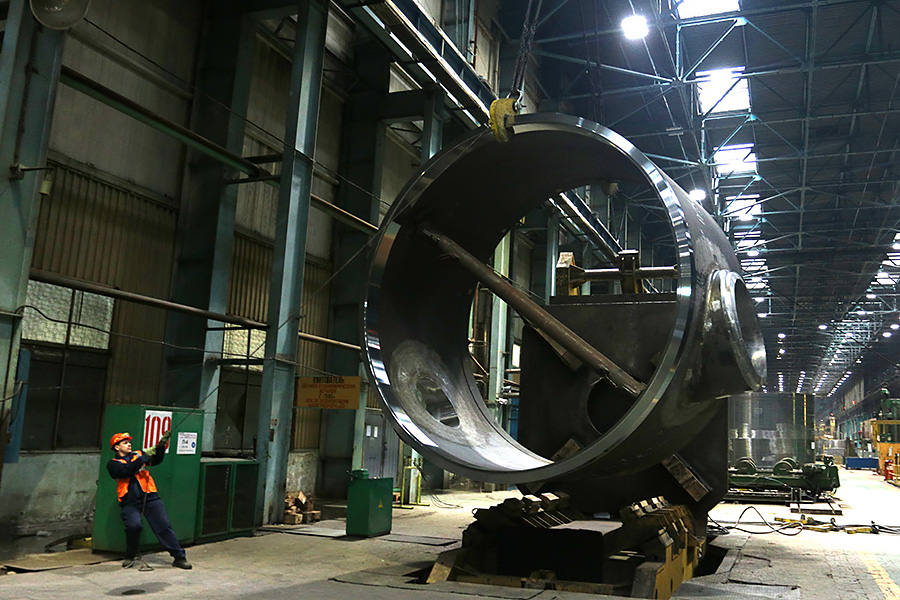
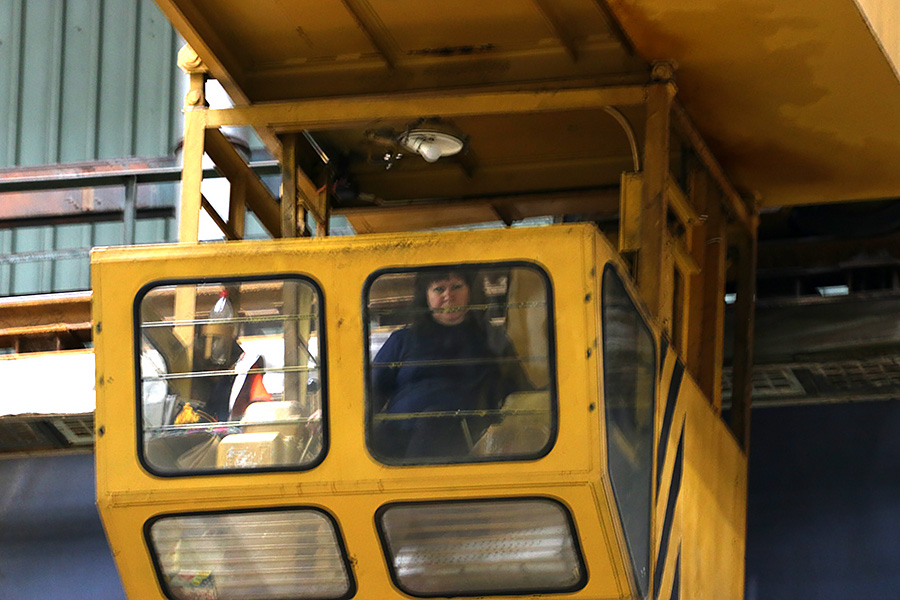
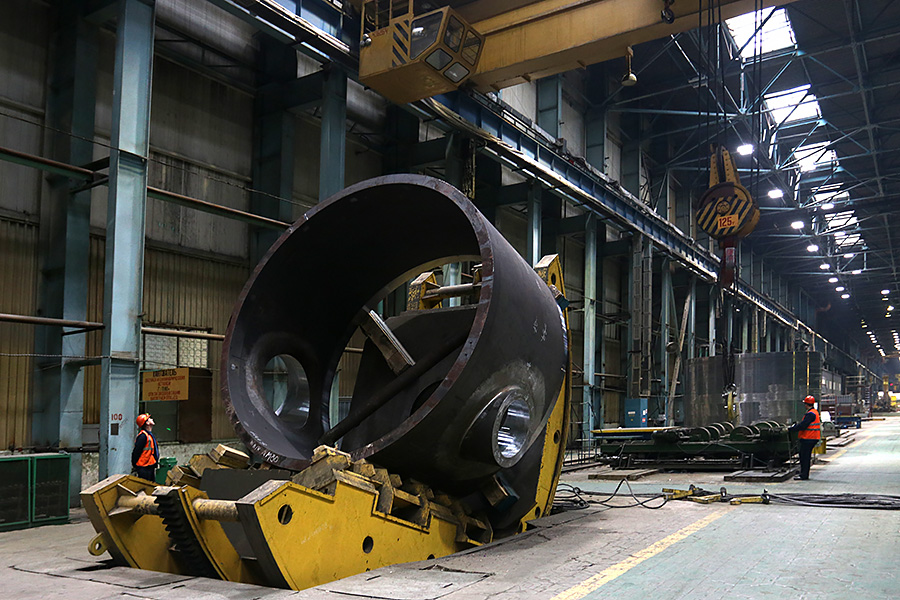

Not far away , the hull of the MBIR experimental reactor is being processed , which should bring the bright future of nuclear power on fast neutrons closer . It is expected that these reactors will be safer and environmentally cleaner, since it is possible to use waste from modern nuclear reactors and weapons-grade plutonium as fuel.
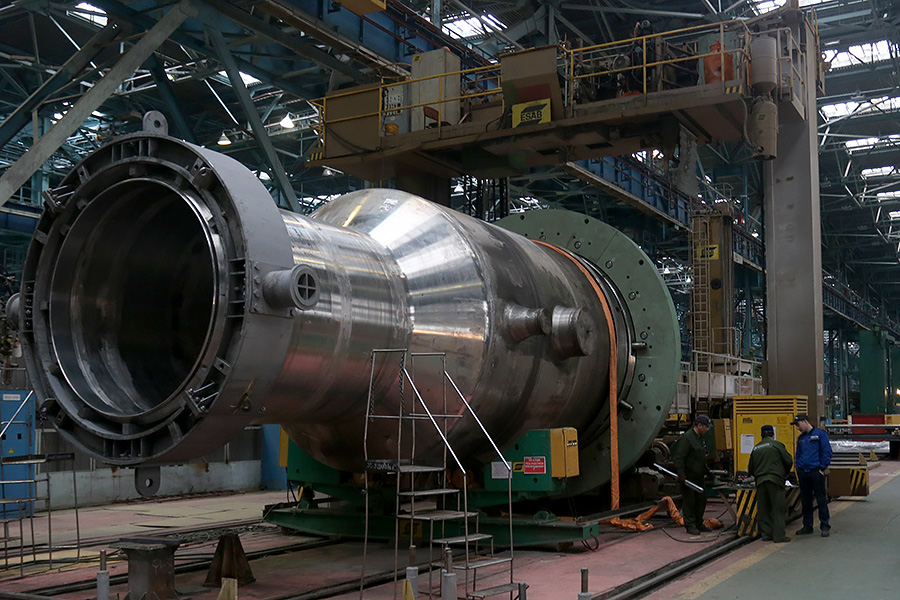
In the same passage of the shop there is a separate x-ray camera - for steam generators.
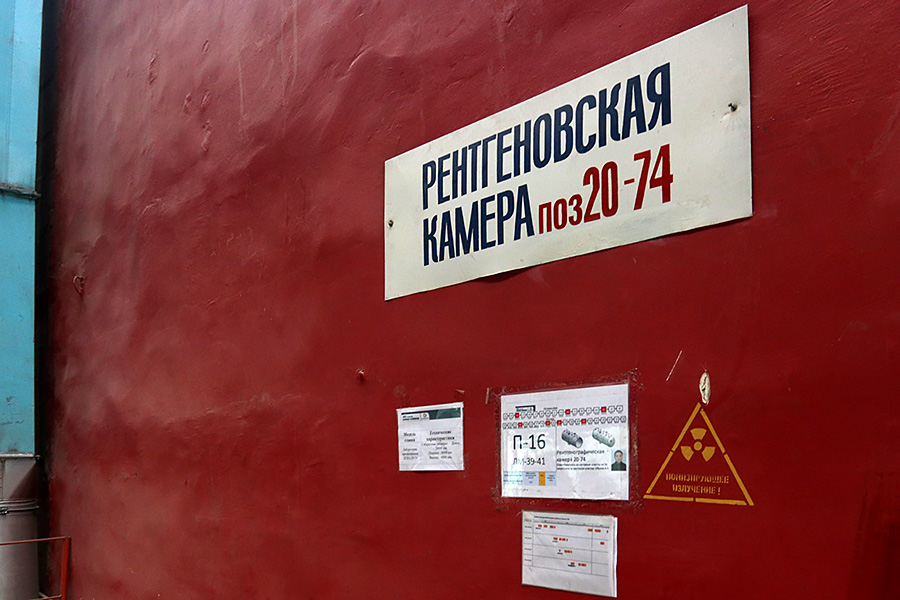
From its scale it can be seen that the radiation there is not as intense as for the “enlightenment” of reactors, but a warning is necessary.
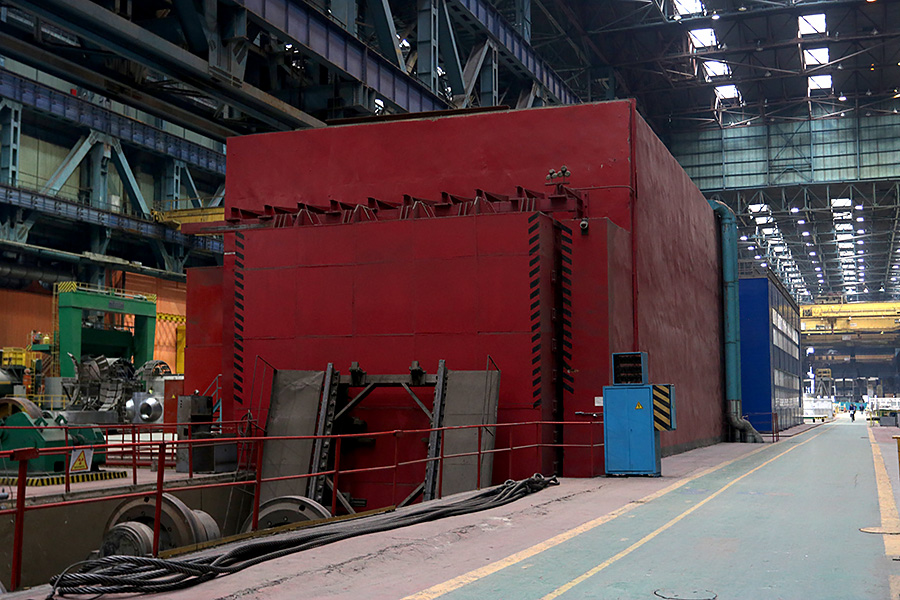
It is curious that a number, practically through the wall, is the design and administrative part, so that the developers of the equipment are in constant contact with the production part.
In general, Rosatom pays great attention to optimizing labor and increasing efficiency. It is worth talking about this separately.
Using the example of heat exchange tubes that fill the steam generators, we were told how the Rosatom production system works.
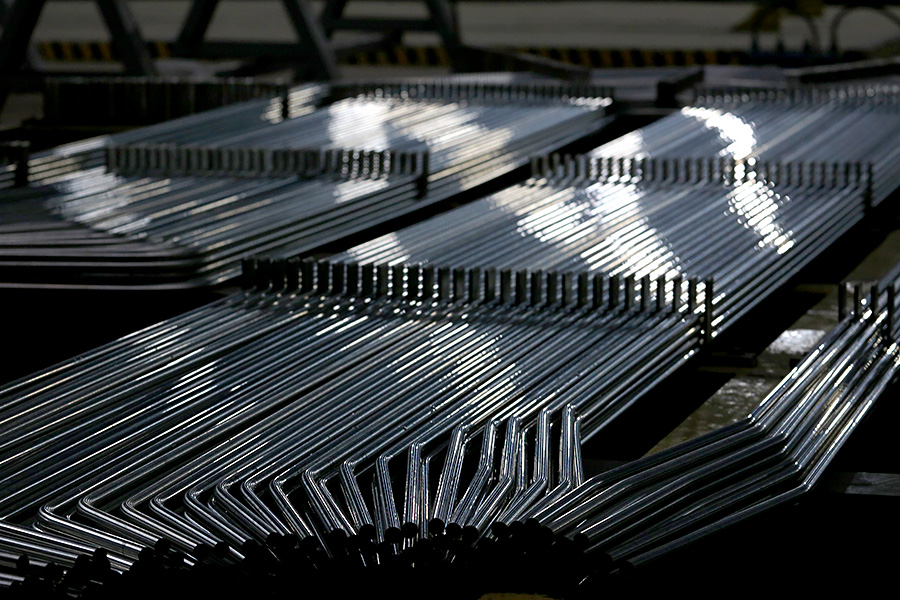
Previously, the preparation of the product took more than 600 days. After optimization - 21 days. And there are no magic tools, just a thorough analysis of all operations and the search for the most optimal option at each stage of work.
This approach is expressed in many ways. For example, areas for movement in the shop are marked for convenience as walking movement, and for transport.
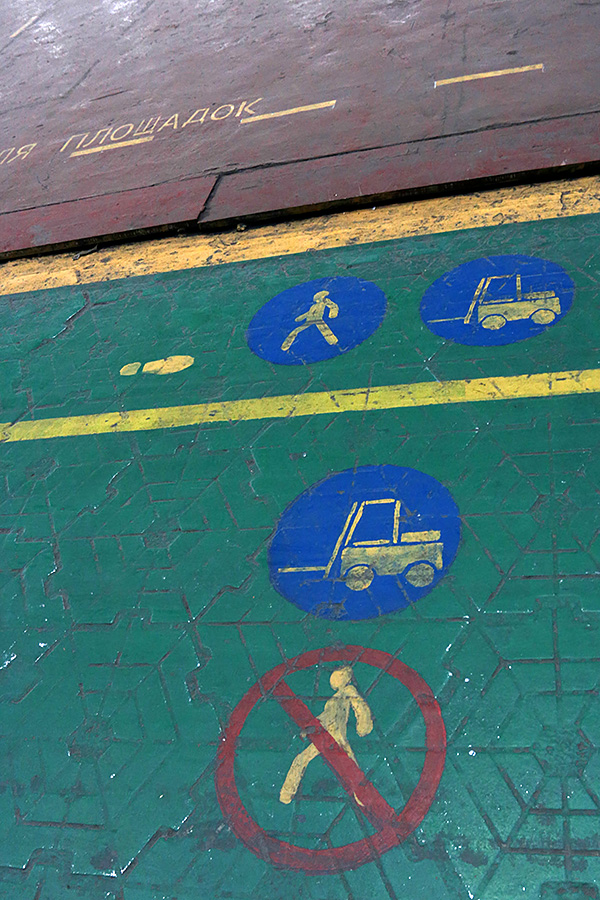
Inside they ride bicycles, electric cars and use heavy conveyors to move goods between spans.
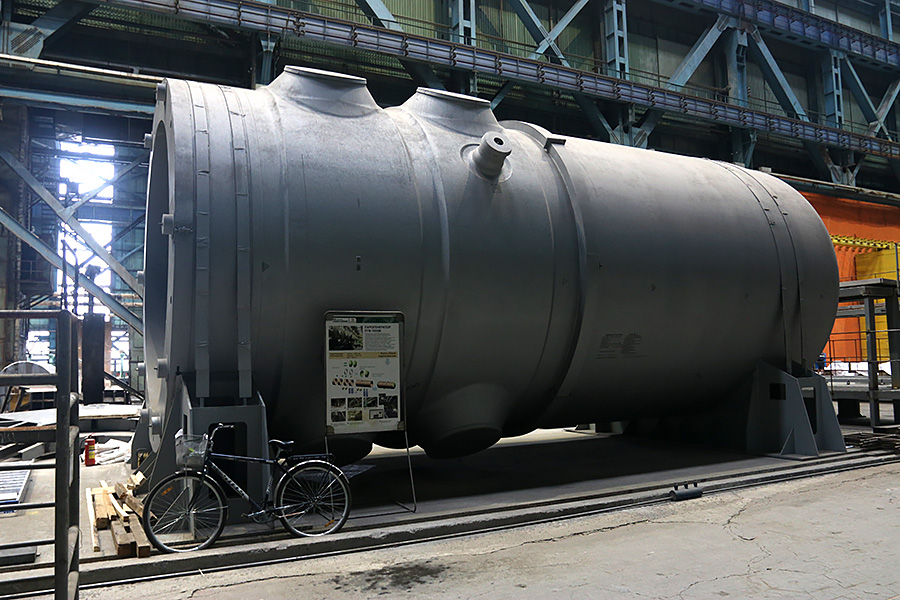

Different sections of the shop are marked with different colors: the green is the least dangerous, here you can walk in a helmet. Switching to red requires increased attention, and wearing glasses to protect your eyes.

For telephone communication is also a separate place.
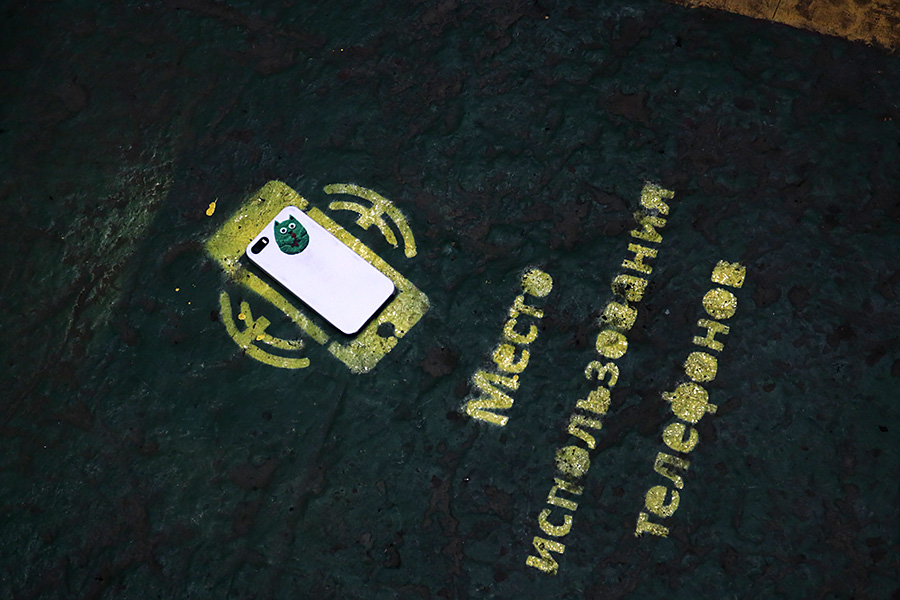
Like a place to think.
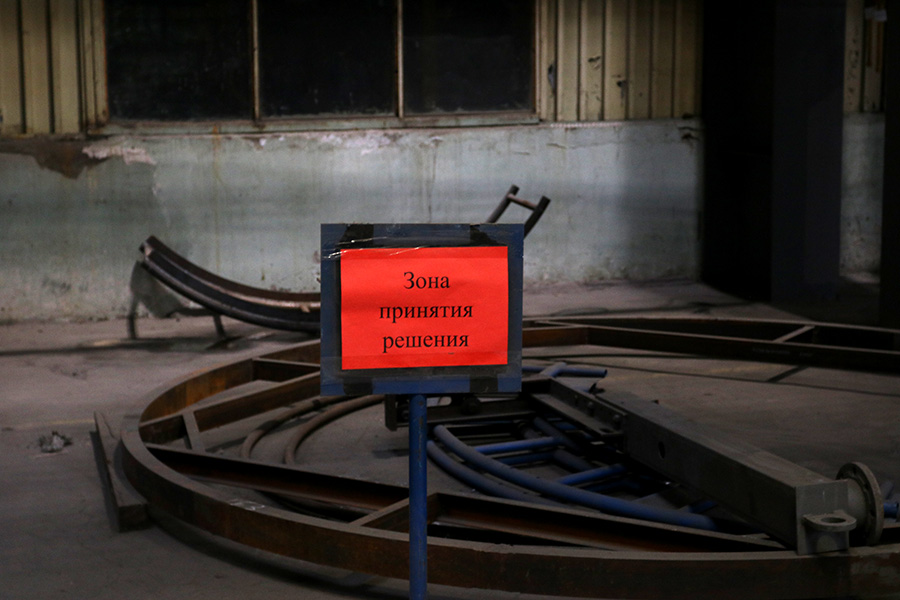
The excursion left positive impressions, in many respects, due to communication with employees of the enterprise. People who are satisfied with their work and are proud of the result of their work, always inspire.
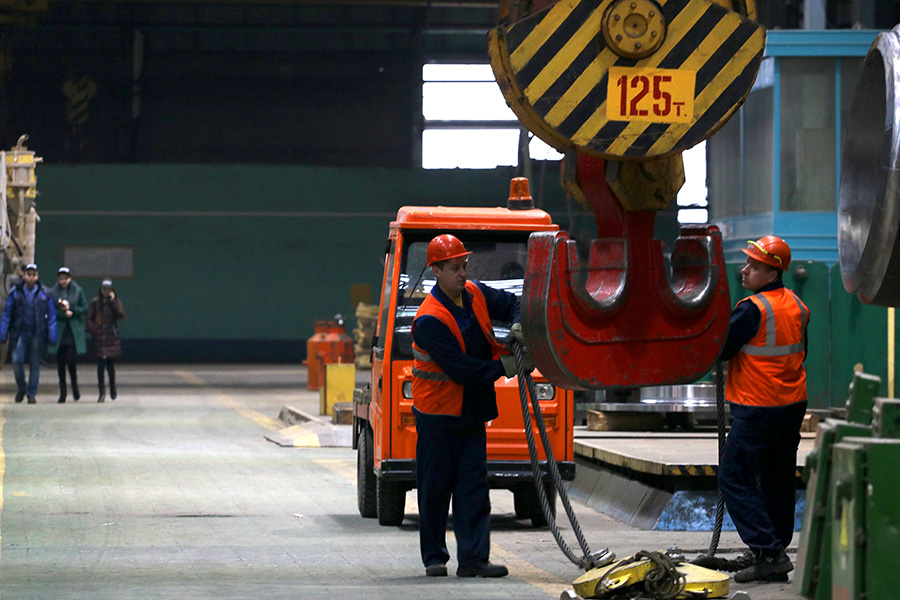
I express gratitude to Atomenergomash for the invitation and excursion to Atommash and personally to Artyom Shpakov.
